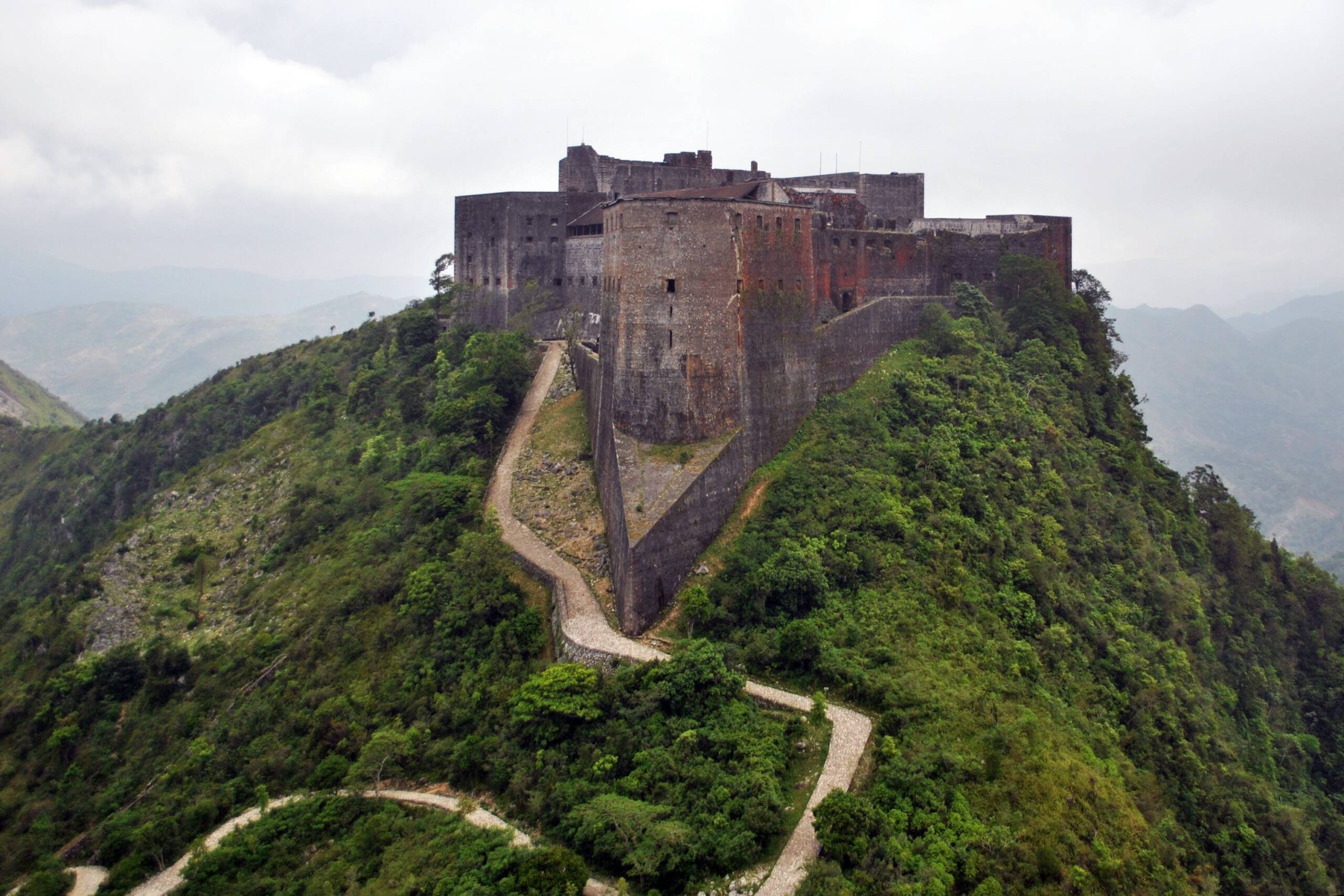The Citadelle Laferrière, commonly known as the Citadel, stands as a testament to Haiti’s resilience, architectural ingenuity, and rich history. Perched atop Bonnet à l’Evêque mountain in northern Haiti, this fortress is not only a symbol of national pride but also a UNESCO World Heritage site. Embarking on a journey to the Citadel is an adventure that combines breathtaking landscapes, historical exploration, and a deep dive into the heart of Haitian culture.
Historical Significance of the Citadel
A Fortress of Freedom
Constructed in the early 19th century, the Citadel was commissioned by Henri Christophe, a key leader in the Haitian Revolution and later King of Haiti. Its primary purpose was to serve as a defensive stronghold against potential French invasion attempts following Haiti’s independence in 1804:
- Strategic Location: Positioned 3,000 feet above sea level, the Citadel offers a panoramic view of the surrounding countryside and the Atlantic Ocean, allowing for early detection of enemy ships.
- Architectural Feat: Built by formerly enslaved Africans, the Citadel stands as a remarkable achievement in military architecture, demonstrating both the technical skill and the determination of the Haitian people.
Symbol of Independence
The Citadel is more than just a military fortress; it is a powerful symbol of Haitian independence and resilience:
- National Pride: As the largest fortress in the Americas, the Citadel represents Haiti’s strength and defiance against colonial powers.
- Cultural Heritage: It is a vital part of Haiti’s cultural and historical heritage, celebrated and preserved for future generations.
The Journey to the Citadel
Planning Your Visit
Embarking on a journey to the Citadel requires careful planning and preparation:
- Travel Arrangements: Visitors typically travel to the nearby city of Cap-Haïtien, which is accessible by domestic flights from Port-au-Prince or international flights from select locations.
- Guided Tours: Hiring a local guide is highly recommended to enhance the experience and provide historical context. Guides are available in Cap-Haïtien and at the entrance to the Citadel.
The Ascent
The journey to the Citadel is as thrilling as the destination itself:
- Transportation Options: Visitors can choose to hike up the mountain, a trek that takes about two hours, or ride on horseback for a more leisurely ascent.
- Scenic Views: The path to the Citadel offers stunning views of the lush Haitian landscape, dotted with vibrant flora and local villages. It’s an opportunity to appreciate the natural beauty of the region.
Exploring the Citadel
Architectural Marvels
Once at the Citadel, visitors are greeted by impressive architectural features:
- Massive Walls and Cannons: The fortress boasts 130-foot-high walls and a collection of over 160 cannons, many still in their original positions.
- Sprawling Complex: The Citadel covers an area of approximately 108,000 square feet, with various rooms, storage areas, and water reservoirs that were designed to support a garrison of up to 5,000 soldiers.
Historical Artifacts
The Citadel is home to numerous artifacts that offer a glimpse into Haiti’s past:
- Cannonballs and Ammunition: Piles of cannonballs and other ammunition are on display, highlighting the fortress’s defensive capabilities.
- Historical Exhibits: Various sections of the Citadel have been transformed into exhibits showcasing the history of the Haitian Revolution and the construction of the fortress.
Breathtaking Vistas
The Citadel’s strategic location provides unparalleled views:
- Panoramic Scenes: Visitors can enjoy sweeping views of the Haitian landscape, including the nearby town of Milot and the distant coastline.
- Photography Opportunities: The Citadel offers countless opportunities for photography, capturing the fortress against the backdrop of stunning natural scenery.
Cultural and Educational Impact
Educational Tours
The Citadel serves as an educational site, offering insights into Haiti’s history and heritage:
- School Visits: Many Haitian schools organize trips to the Citadel, providing students with a hands-on learning experience about their nation’s history.
- Historical Lessons: Guided tours often include detailed explanations of the Haitian Revolution, the construction of the Citadel, and its role in Haiti’s fight for independence.
Cultural Significance
Visiting the Citadel allows for a deeper understanding of Haitian culture and identity:
- Cultural Pride: The Citadel is a source of immense pride for Haitians, embodying their ancestors’ bravery and determination.
- Preservation Efforts: Ongoing preservation efforts ensure that the Citadel remains a testament to Haiti’s rich cultural heritage for future generations.
A Journey Worth Taking
Embarking on a journey to the Citadel in Haiti is more than just a visit to a historical site; it is an immersive experience that offers a profound connection to Haiti’s past, present, and future. From the challenging ascent and the exploration of the fortress to the breathtaking views and cultural insights, the Citadel provides a unique and enriching adventure. It stands as a powerful reminder of Haiti’s enduring spirit and a beacon of pride for all who call this vibrant nation home.





